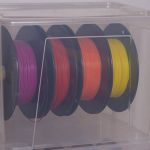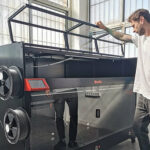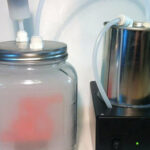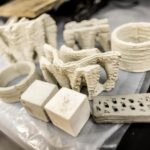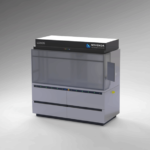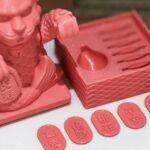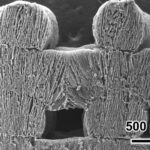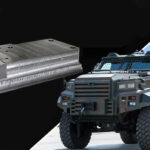Getting great print results sometimes can be more an art then science. There are however several methods to increase your chances of success and obtaining high quality prints. This filament guide helps you choose the right filament.
Some of the variables you’ll have to work with are the printers themselves, software, filament, setup and last but not least, personal flare. At this point you probably already have a 3D printer or one in mind so we’ll start off with choosing a good 3D printer filament.
Why you should not choose the cheapest filament
With the large selection of filament hitting the market and variety of venders out there it can be hard to find that perfect one that suits you without wasting money and time to find it. I can’t tell you what company to go with, just don’t go too cheap, you will get what you pay for and it’s more times then not, cheap for a reason.
Some of the things you need to be cognizant of when choosing filament is:
- Diameter consistency
- Moisture
- Consistent viscosity and debris
Filament Diameter Consistency
Lets start with filament diameter; 3mm vs 2.85mm vs 1.75mm. I personally feel 1.75mm is superior and here’s why. It’s more common on the market and is a fresher quality plastic. It’s generally newer and rotates out of retailers inventory quicker resulting in newer product to be made and to be replaced on shelves. It seems to have better extruding and retraction and generally a better flow of plastic. Now this make sense since the extruder stepper motor requires more revolutions to extrude the same amount of plastic as 3mm / 2.85mm resulting in higher precision and better control of flow. Regardless of the size you choose the diameter should be consistent and round throughout. Many printers now have spring tensioners in the extruders so small variations in diameter such as -/+.03mm aren’t much of a problem.
Filament Moisture
Another concern is moisture and this is usually due to poor packaging and or stored too long out of packaging. Plastic will absorb moisture from the atmosphere relative to the humidity and duration of exposure. You’ll recognize moisture in the filament if you get splatter and spiting at the hot-end due to water very quickly turning to tiny expanding pockets of steam. Ultimately this leads to poor prints and bad layer adhesion.
Moisture free filament
Certain 3D printing materials such as PLA and Nylon easily absorb moisture from the atmosphere. It is this absorption that can cause problems such as effecting print quality and cause damage to your hot-end through blockage.
- Hot-End Damage: Moisture absorption causes filament swell. If the swelling is sufficient enough, the plastic will simply block up the nozzle and may cause permanent hot-end damage.
- Print Quality: During melting of the plastic, the trapped moisture turns into steam and causes some bubbling. It is this bubbling that interferes with the extrusion rate and results in a model that lacks strength and quality… not to mentioning not looking good!
- Solution: To combat filament moisture absorption and serious damage to your equipment, one inexpensive solution is to buy vacuum bags. Place your filament spool in the bag, throw a couple of silica gel packs and suck all the air out.
You’ll find more tips on how to keep filament moisture free in our filament storage guide.
Filament Impurities
Impurities in the plastic is the biggest issue when choosing filament. Chemical impurities leads to poor melted plastic viscosity and debris will plug up the extruder nozzle. A plugged up nozzle is a big setback! Not only will the print fail costing time and money but it could also means taking the extruder apart and cleaning in out. There seems to be a direct correlation between cheap filament and plugged nozzles. Though you understandably may be trying to save money on filament, cheap filament may inadvertently cost you more money in the end. Typically if you choose a well rated decently priced filament you’ll be ok and save yourself a lot headaches.


